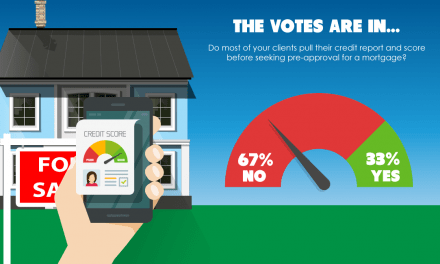The share of mortgaged homes with negative equity in California increased for the first time since 2009 in the fourth quarter (Q4) of 2018, according to CoreLogic. While the increase was slight — from 2.3% in Q3 to 2.4% in Q4 — the implications for homeowners are significant.
A greater number of homes weighed down by negative equity — when a homeowner owes more on their mortgage than their home’s current value — is a natural occurrence in a falling price environment. That’s because homeowners who purchased recently find their home suddenly worth less than when they purchased. In California, home prices began to decline across the state around August 2018, with the rise in negative equity beginning in the following quarter.
When a homeowner falls underwater, they become stuck; an economic tenant in their own home. Unable to move without pursuing a short sale or foreclosure, their options are limited. Worse for their day-to-day finances, many underwater homeowners make monthly mortgage payments higher than their property’s rental value. This makes it difficult to rent out their home at a price sufficient to cover their mortgage, plus the cost for property management and property upkeep.
This is not just harmful to a homeowner who wishes to relocate, be it for a new job, to downsize or be closer to family. As those financially able to sell dwindles, it harms the housing market as well. Negative equity is also detrimental to the broader economy, as homeowners continue to pay into their black hole assets instead of using their incomes to purchase goods and services in their local communities.
Related article:
Underwater homes set to increase in 2019-2020
The negative equity trend will continue to follow home price movement in the coming years.
Home prices across California peaked in Q3 2018, continuing to decrease on a monthly basis since. Despite the month-to-month decrease, home prices remain 1% higher than a year earlier in the low tier, 2% higher in the mid tier and 4% higher in the high tier as of January 2019. This year-over-year spread has shrunk from the 8%-10% annual increase experienced earlier in 2018.
In other words, a homeowner’s mid-tier home purchased in January 2018 is now worth about 2% more than a year earlier. This homeowner is not technically underwater, but they are close enough that, when including selling fees, they would need to absorb a loss to sell their home.
Will these new homeowners regain positive equity anytime soon?
Most negative equity homeowners won’t see relief until home prices begin to rise again, expected after the conclusion of the forecasted 2020 recession.
Related article:
Using the yield spread to forecast recessions and recoveries
Further, expect to see the number of negative equity homes increase as home prices continue to dip in 2019-2020. first tuesday forecasts prices will finally bottom in 2021, at which point the number of negative equity homes will level off before gradually decreasing back to normal numbers.
The good news is the number of underwater homes isn’t likely to return to the extreme heights seen during the 2008 recession and extended recovery. Nearly 40% of all California mortgaged homeowners were underwater in 2010, the last peak in negative equity. All the same, a slowdown in prices and sales ensures more homeowners will be weighed down by negative equity in the coming years.















How old is Carrie B.Reyes, The author??
Ridiculous! Up 1/10th of 1 percent. I will bet the margin for error is larger than that! The way are economy is growing, everyone should be buying real estate! The buyers I know that purchased in the inland Empire have had a noticeable increase in equity even since the beginning of 2018. The sky is NOT falling. It isn’t even sprinkling.
LOL! you get paid to sell that short lived mirage.